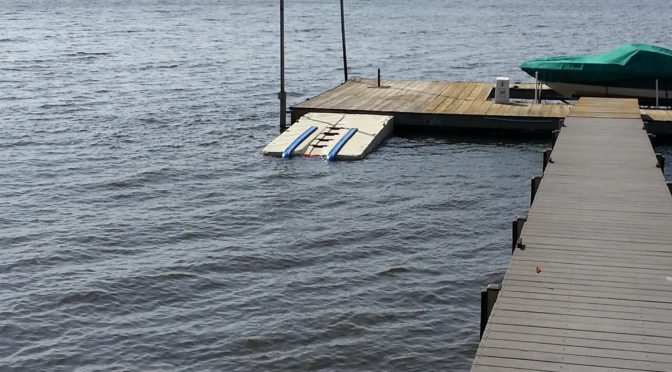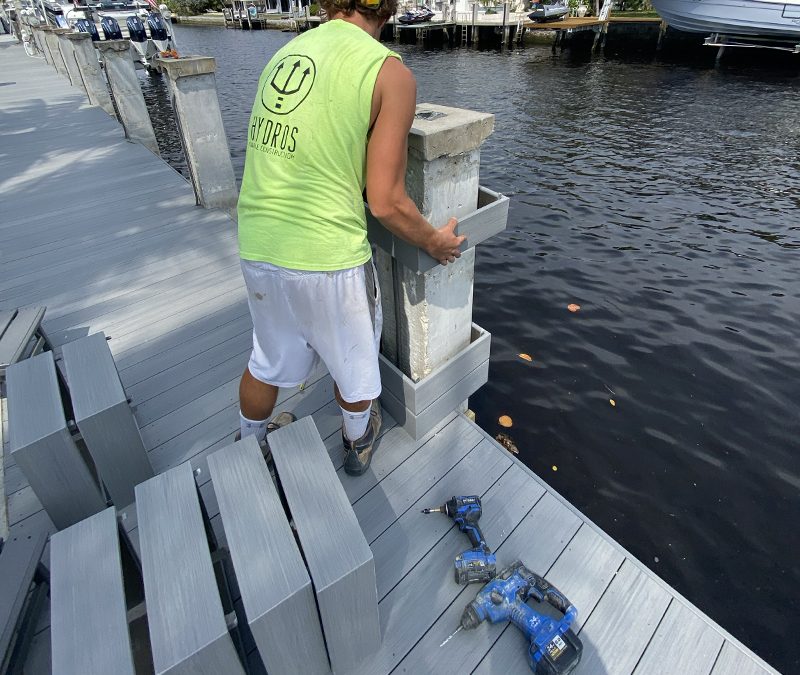Effective Dock Fixing Techniques: Ensuring Structural Honesty
Making certain the architectural integrity of docks with efficient repair work methods is critical for the long life and safety of marine centers. This entails a multi-faceted strategy starting with detailed inspections using sophisticated technologies like finder equipment and remotely operated cars (ROVs) to discover both visible and hid problems. Subsequently, choosing the best fixing products, such as composite materials and corrosion-resistant alloys, is critical for toughness. Architectural reinforcement approaches, consisting of the implementation of cross-bracing systems and load-distribution plates, play an important duty in mitigating anxiety factors. The relevance of these methods comes to be noticeable when checking out innovative repair work methods and preventative upkeep approaches.
Assessing Dock Damages
Evaluating dock damage is an essential very first step in ensuring the architectural stability and security of any type of docking facility. This initial assessment involves a thorough examination to identify both hidden and visible problems. Trick elements to check out include the dock's foundation, pilings, decking, and hardware. Each element needs to be scrutinized for signs of wear, rot, corrosion, or other types of destruction that could jeopardize the architectural stability.
Structural engineers or qualified examiners usually execute these analyses making use of specialized tools and methods. For example, underwater inspections might utilize sonar devices or from another location operated cars (ROVs) to spot immersed damage. Above water, aesthetic evaluations are enhanced by utilizing dampness meters and various other analysis devices to uncover underlying issues not promptly visible to the naked eye.

Finding Fixing Products
Choosing the proper repair service products is an essential step in the dock reconstruction process, one that straight affects the durability and efficiency of the repaired framework. Product option must be driven by variables such as environmental problems, load-bearing needs, and compatibility with existing dock elements. For example, wood is a standard option for anchors due to its natural resilience and visual allure. Nonetheless, picking the ideal sort of wood, such as pressure-treated lumber or naturally rot-resistant types like cedar or teak wood, is essential to stand up to aquatic settings.
In enhancement to wood, composite products are progressively popular as a result of their durability and reduced maintenance needs. Compounds, usually made from a blend of plastic and wood fibers, provide excellent resistance to rot, insects, and UV damages. For metal docks, choosing corrosion-resistant alloys such as galvanized steel or marine-grade aluminum is necessary to stop rust and make certain structural integrity in saline water conditions.
Epoxy materials and marine-grade sealants are indispensable for fixing fractures and sealing joints, giving a water resistant barrier and improving the dock's total stamina. By meticulously choosing high-grade materials, dock fixings can achieve resilient outcomes, thereby guarding versus future destruction and ensuring safe, reputable usage.
Architectural Support Strategies
Efficient architectural support strategies are critical in guaranteeing the stability and longevity of dock repairs. This method is especially efficient for docks subjected to heavy tons or extreme ecological problems.
Another essential technique is the application of fiber-reinforced polymers (FRP) These products supply high strength-to-weight proportions and superb resistance to rust, making them excellent for enhancing concrete or wood docks. FRP can be used in sheets or strips and adhered with epoxy materials to improve structural stability.
Bracing and anchoring systems likewise play a crucial role in architectural support. Cross-bracing, utilizing metal or wooden beam of lights, can counteract side forces, reducing persuading and movement. Securing systems, such as helical piers or driven piles, give a steady structure by moving loads to much deeper, much more stable dirt layers.
Lastly, the integration of load-distribution plates can aid distribute weight much more equally throughout the dock's surface, alleviating localized tension points. These techniques jointly make sure that anchors remain risk-free and robust, with the ability of enduring the rigors of their functional atmosphere.
Advanced Repair Work Methods

Another sophisticated strategy involves underwater welding, which click reference enables repair work to be conducted without the requirement to dewater the location. This method is especially useful for addressing structural problems in immersed dock components, guaranteeing very little disruption to operations. Improved welding techniques, combined with robotic systems, provide accuracy and integrity, therefore expanding the lifespan of the dock.
In addition, cathodic defense systems are carried out to avoid corrosion in metal dock frameworks. By utilizing sacrificial anodes or impressed current systems, these techniques properly minimize the electrochemical procedures that cause material deterioration.
Last but not least, progressed tracking innovations, such as structural wellness surveillance (SHM) systems, supply real-time data on the condition of dock frameworks. These systems make it possible for positive maintenance and timely treatments, inevitably ensuring the long-term structural honesty of the dock.
Upkeep and Avoidance
Maintenance and avoidance are basic ideas that underpin the durability and safety and security of dock structures. Routine assessments are vital, enabling very early detection of wear and tear, prospective weaknesses, and ecological effects. A proactive technique, including regular checks for corrosion, rot, and architectural shifts, reduces costly repair work and prolongs the dock's operational life.
Preventative procedures should consist of applying safety finishings to metal parts to protect against corrosion and using treated timber to resist degeneration. Additionally, making sure correct drain and air flow can stop water build-up, which is a common reason of structural deterioration. Including high quality products and adhering to producer standards throughout building and construction and repair service phases additionally play important functions in boosting durability.

Training personnel in dock maintenance ideal techniques makes sure consistent application of preventive measures. Leveraging technical breakthroughs, such as drones for assessments and sensors for real-time monitoring, can further boost maintenance efforts. By prioritizing upkeep and prevention, dock owners can ensure architectural stability, operational security, and economical administration over the about his dock's life expectancy.
Final Thought
In final thought, maintaining the architectural stability of marine centers requires extensive dock repair methods. Complete evaluations making use of sophisticated devices reveal both visible and hid damages, while the selection of appropriate fixing materials enhances sturdiness. Implementing architectural support techniques addresses stress points effectively. Advanced repair service techniques, paired with regular upkeep practices, make certain the dock stays operational and risk-free under diverse ecological conditions. Embracing these strategies substantially prolongs the life expectancy and functionality of aquatic infrastructure.
Making sure the architectural honesty of anchors through efficient repair methods is extremely important for the long life check out here and safety of aquatic centers.Picking the ideal repair service products is a crucial action in the dock restoration process, one that straight affects the longevity and efficiency of the fixed structure.Effective structural support strategies are critical in ensuring the security and long life of dock repair services. By prioritizing maintenance and avoidance, dock proprietors can make sure structural integrity, operational safety and security, and cost-efficient monitoring over the dock's life-span.
In conclusion, keeping the architectural stability of marine centers requires detailed dock fixing strategies.